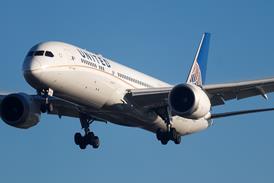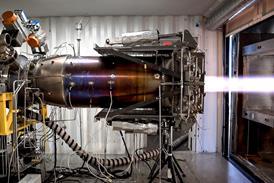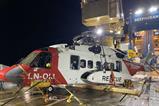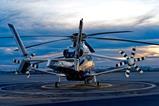Vertical Aerospace’s initial VX4 prototype was written off after the failure of a propeller blade due to a manufacturing fault which led to a loss of thrust from two of the aircraft’s remaining electric motors, ultimately causing it to impact the ground with a high rate of descent, UK investigators have determined.
Detailing the crash sequence in its final report into the 9 August 2023 incident, the conclusions reached by the Air Accidents Investigation Branch (AAIB) support the manufacturer’s own findings, which it published in the month following the event.
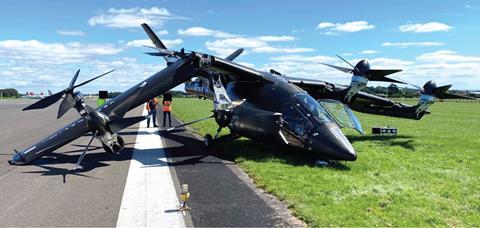
At the time of the accident, Vertical was carrying out a second phase of uncrewed testing of the VX4 electric vertical take-off and landing (eVTOL) aircraft at Cotswold airport in southwest England.
Controlled by a remote pilot, the test was intended to evaluate the VX4’s performance with one electric propulsion unit (EPU) inoperative during out of ground effect hover.
Having been held in a hover at 30ft above ground level for 10s, the VX4 (G-EVTL) was being accelerated towards a target ground speed of 7kt (13km/h) when, at about 2-4kt, “a loud ‘pop’ was heard, and a propeller blade was released from EPU3”.
The VX4 prototype was equipped with eight Equipmake HTM-1900 EPUs, with the four tiltable units on the wing’s leading edge numbered one to four, from left to right, and the rear fixed units numbered five to eight.
As the blade released at about 1,200rpm, the out of balance load created led to the failure of the EPU3 pylon as its forward section initially rotated upwards under residual propeller thrust.
This movement in turn damaged high voltage power cables and wiring harnesses – two of six CAN buses were completely severed and a third experienced an intermittent connection – ultimately leading to the loss of thrust from EPUs 4 and 7.
Damage to the wiring “meant the system did not command sufficient thrust to the remaining EPUs to allow the aircraft to continue to hover”, says the AAIB.
Although the flight-control system maintained the VX4 in an “approximately level attitude”, it descended at a rate of 19.45ft/s – twice the limit it was designed to withstand – hitting the southern edge of runway 26, with the left main wheel and nose wheel on the grass.
During the impact, the nose-gear collapsed and the starboard wing broke at the inboard pylon, remaining attached to the rest of the aircraft by wiring harnesses.

Two propeller blades had separated from EPU3, with the failed blade coming to rest around 50m from the rest of the wreckage.
Subsequent examination of the blade showed that its inner spar had become unbonded from the outer sheath. This allowed the outer part to translate radially outwards, increasing the bending load on the spar until its outer section fractured and separated.
“The blade sheath that released during flight showed evidence of poor bonding between the sheath and the blade spar,” the AAIB says. “Most of the adhesive remained attached to the internal sheath surface with very little present on the blade spar.”
Stress analysis conducted by Vertical showed that only 5% of the spar-sheath bond area was required to retain the sheath in the conditions in which the failure occurred, pointing to “progressive degradation of the bond” during operations prior to the release, the report says.
CT scans of two other similar blades from Vertical’s spares pool revealed widespread voids in the bond line in both components, alongside variations in the shape of the spar cross-section.
“A review by the manufacturer determined that the blade structural design, and the relevant manufacturing control, quality assurance processes and verification programme were contributory factors to the blade release,” the AAIB adds.
Vertical has since retired all the so-called “generation one” blades, replacing them with a second-generation design that eliminates the possibility of the bonding failure mode. These will be flown aboard its next prototype, due to make its maiden sortie in the coming weeks.
In all, the manufacturer identified 36 product and process improvements resulting from findings of the investigation.
“These include improvements in quality control, supplier qualification, design and verification processes, flight-control laws, CAN bus architecture and the routing of wiring harnesses,” says the AAIB.


